

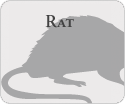
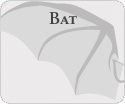
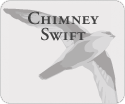
What’s that Sound in My Attic?
You are startled awake in the middle of the night or early in the morning, heart-pounding upon hearing an unusual sound emerging from the ceiling or behind the walls. Perhaps it is a knocking sound in the attic, tapping noise on the ceiling, or even scraping noises behind the walls. One of the clearest signs of an animal problem is the noises it makes.
What Animal is in My Attic?
It is unnerving knowing that a wild animal could be lurking nearby, but the worst part is not knowing what animal is making the noise. Even worse, how many of them are there, and what damage are they causing?
To help in your investigation, this guide narrows down the potential suspects and provides professional advice on the next steps you should take.
The most common of these noise-causing animals are:
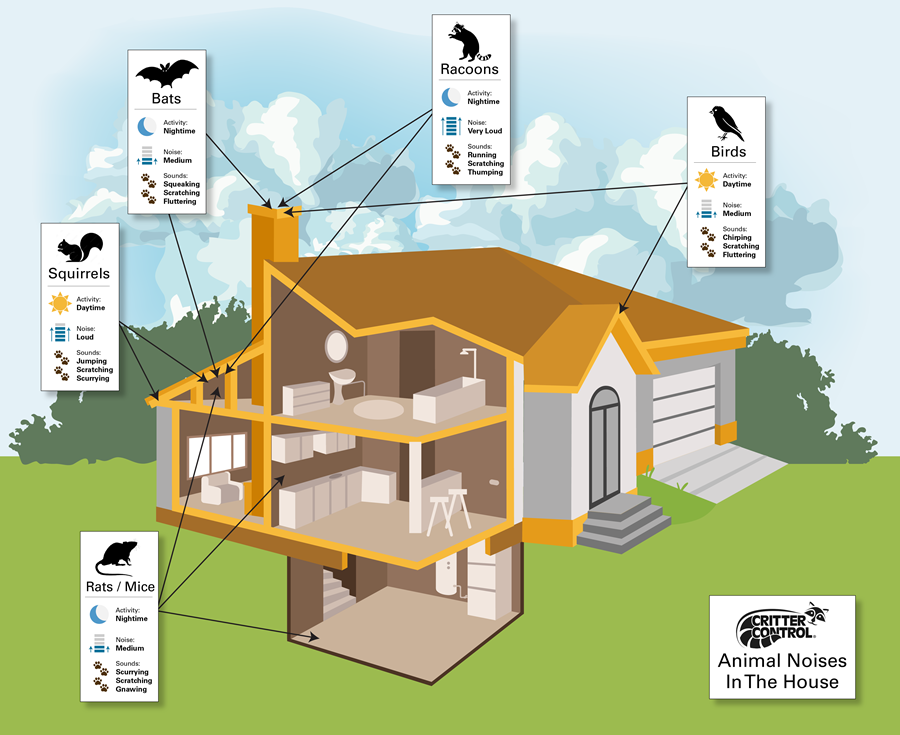
When Do You Hear the Animal Noises?
When you hear animal movements is one of the best methods for figuring out the kind of animal in your attic. Animals run on different schedules. Some are active in the morning like us, while others tend to run around all night. Keeping a log of the time you heard the noises in your attic along with the specific sound you heard is a useful tool in identifying and providing information to Critter Control wildlife removal specialists.
The time of year can also indicate what the source of the noises are. During the spring, raccoons and squirrels are some of the most common animals. During the winter months, rats and mice often make noises you hear.
Early Morning and Late Night Attic Noises
Crepuscular animals are active during the twilight hours, the time before sunrise, and after sunset where the sky is only partially illuminated by the sun, neither totally dark nor completely lit. Hence, noises in the attic during the early morning period typically come from these critters. They include rats, mice, skunks, barn owls, chimney swifts, and insects. Snakes can display crespuscular activity but generally are diurnal. Noises occurring at night most likely originate from nocturnal species. These species tend to be most active in the night while you are getting ready for bed or already asleep. Mice and rats, which also display crepuscular activity, are nocturnal animals. Other nocturnal animals we encounter include flying squirrels, bats, and raccoons.
Raccoons Sounds in Attic
Raccoons are one of the biggest culprits when it comes to loud noises in the attic at night. This is especially so in the spring, as raccoons are searching for a safe shelter to give birth and raise kits.
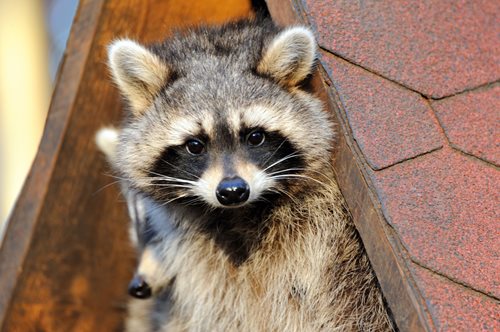
Hear a thumping, banging, or knocking noise in the attic or crawl space? At 20 pounds or more, equivalent to a small-medium dog, it is highly likely you are hearing a raccoon. Mewing, crying, and whining noises in the attic may suggest the presence of a litter of baby raccoons. These kitten-like noises eventually transform into louder thumping noises and light snarls as the kits grow and start wrestling and playing.
Importantly, raccoon mothers are masters at hiding baby raccoons (kits) in difficult-to-find places. They will do almost anything to get back into an attic, especially if exclusion techniques are applied before kits have been carefully removed. Raccoons can easily break through the fascia boards under eaves or rip off roof shingles to create entry points. If you are considering DIY, this should make you reconsider. Every inch of the attic including the hard-to-reach and unsafe spaces must be carefully inspected.
Rat and Mice Sounds
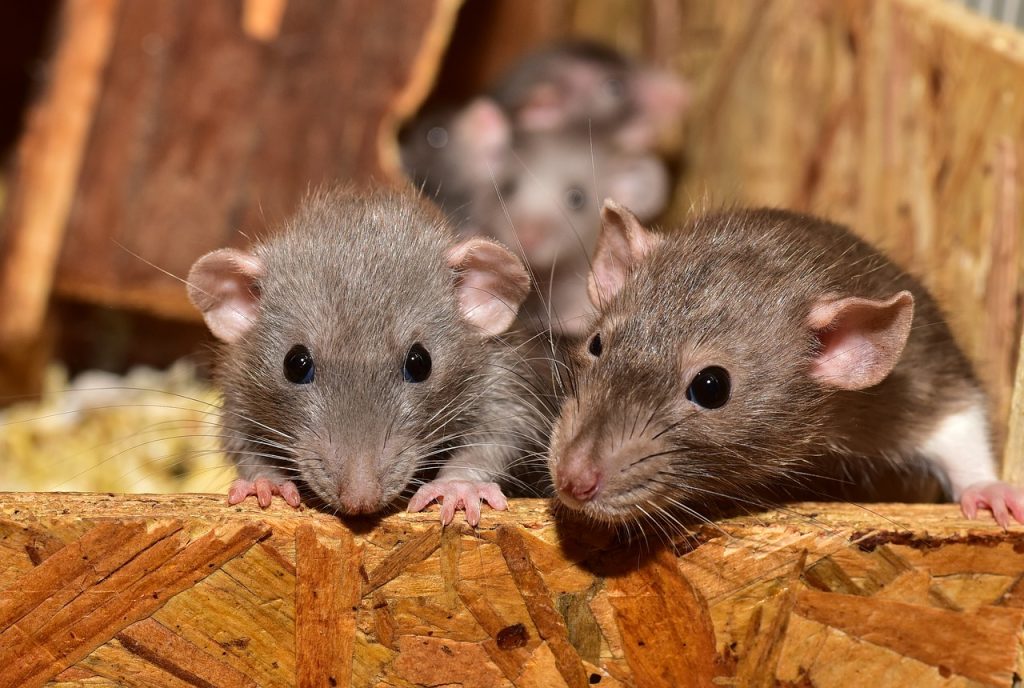
One of the most common questions for Critter Control, “what do rats in the attic sound like?” As rodents move across baseboards, drywall, and floorboards, you are likely to hear the light pitter-patter of footsteps. Typical rat and mice noises include grinding gnawing, scurrying, scratching, and scuffling.
Many mouse and rat sounds are produced by their claws digging into surfaces to get a better grip, or when they scurry from one place to the next. Additionally, rodents will chew wooden baseboards to create larger holes for entrance or new pathways. Lastly, mice are known to make squeaking or even high pitched singing sounds, especially when babies are present or when the males are trying to find a mate. At night, when everything is silent, rodent sounds appear amplified.
While rodents can be crepuscular or nocturnal, they are also intelligent, purposely adapting their movements and activities to the time you are likely to be in bed or away from home.
Norway rats and the house mouse are mostly nocturnal, becoming active around dusk in pursuit of food and water. You may see one during the day if the rat population is high. Just because you see a mouse during the day, does not suggest the mouse population is high.
Bat Sounds in the Attic
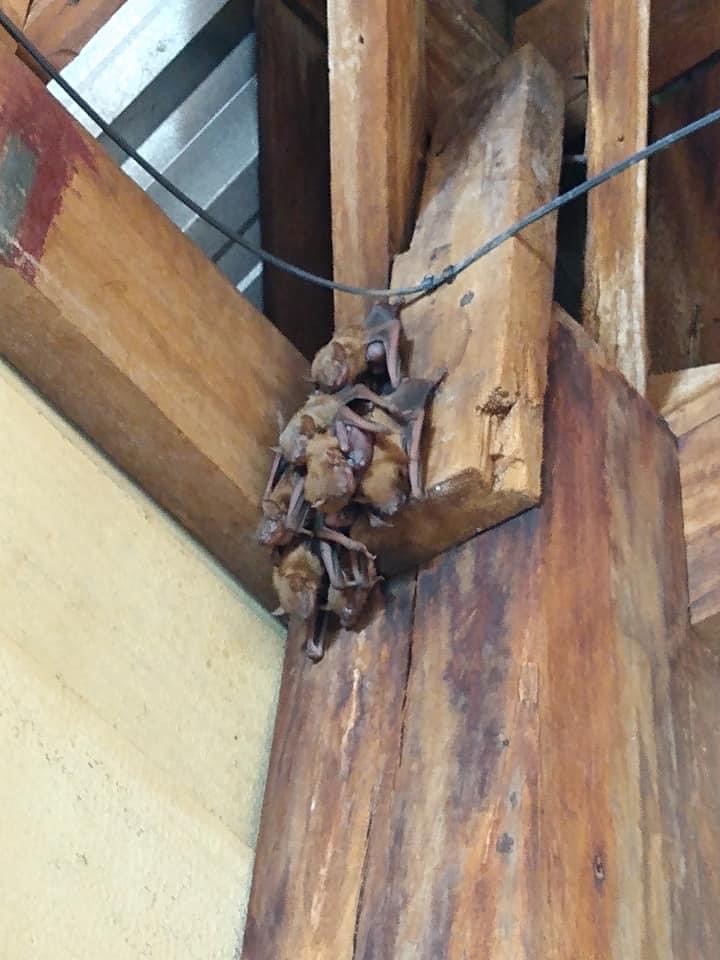
Bats often find shelter in homes for the purposes of giving birth to their young. They also navigate into homes during winter to escape extreme cold. Bats only need an entry hole the size of a dime.
Bat sounds often roost from within wall cavities or in attics, as these locations are suitable substitutes relative to their native shelter (trees, caves, and crevices). As for identifying bat in attic sounds, their vocalizations sound like squeaks and chirps. Homeowners might be able to hear scratching or fluttering in their attic.
Noises in the Attic During the Day
Squirrels in Attic Noises
If you hear sounds in your attic during the day, most times it is a squirrel. Squirrels are diurnal, meaning they are most active during daylight hours. In terms of your house, the noise will most likely occur during the early morning and late evening, when squirrels are entering and exiting the home. Squirrels commonly produce scurrying, scampering, and scratching sounds in the attic.

Typical Animal in Attic Sounds
Scratching Sounds in Attic
Many people report hearing scratching in the attic or behind walls. Common animals that scratch or gnaw include mice, rats, squirrels, and bats.
Animal Vocalizations
Not many wildlife species vocalize in attics, which makes identification easier for the few species that do. Shrill squeaks are often indicative of rats or mice, and sharper ‘shrieks’ may indicate infestation. Raccoons are known to produce squealing, chattering, and growling sounds, especially when they have kits (babies). Lastly, bats will chirp at night or in the morning before sunrise.
Flapping Noise in Attic
Flapping and fluttering sounds are fairly quiet through the ceiling, but if you hear it, it may be a sign of a bird or bat in the attic. However, when stuck, this noise can become quite noisy. In this case, it is best practice to call a professional as soon as possible to prevent the animal from harming itself.
Noises in the house can be tricky. A number of things can make noises that are similar to animals, including knocking sounds in pipes, creaking floorboards contracting and expanding during temperature fluctuations, electric humming, and more.
Aside from sounds, animal droppings (feces) are incredibly useful for identification purposes. Take a look at our wildlife scat/poop identification guide to get an exact match on the creature in your attic!
Animal Removal from Attic
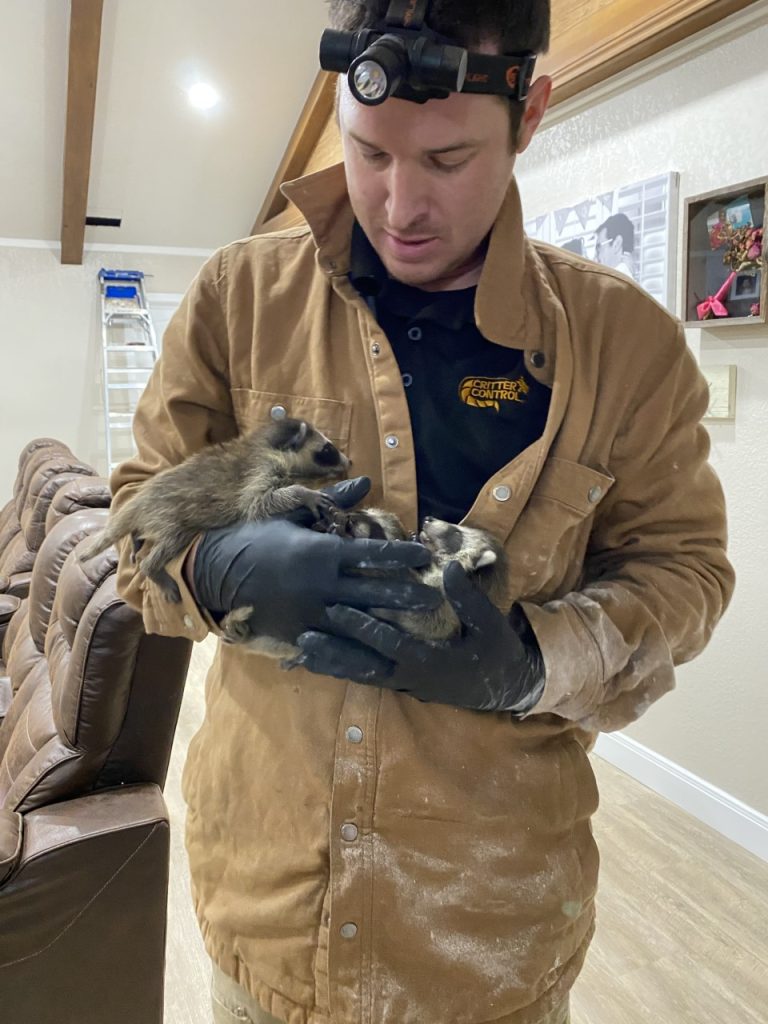
However, if you have a sneaking suspicion that noises are coming from an animal, you are probably right. Listen to your gut and call a Critter Control wildlife specialist before infestation, damage, or breeding occurs. These professionals have the experience and training to tackle any wildlife removal scenario. They will keep your loved ones safe while also treating animals humanely in the removal process, 100% guarantee. We can help you get rid of animal noise problems.